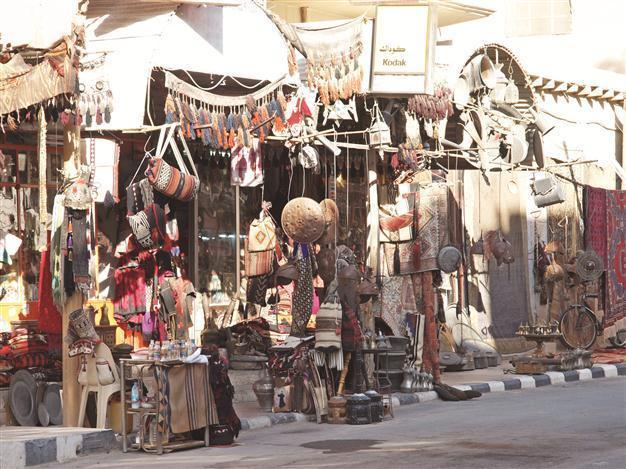Traveling through Syria before the Arab Spring
WILCO VAN HERPEN/Hürriyet Daily News

Modern Palmyra, a small town in central Syria, is nothing more than one big main street filled with restaurants and souvenir shops and a couple of side streets. Photo by Wilco VAN HERPEN
A couple of years ago I made a program for Turkish national TV channel TRT Avaz. I visited countries like Kyrgyzstan, Yemen, Lebanon, Syria and many more.
About 12 months ago the Arab Spring started and I was in shock. Countries that I visited a year and a half ago are on fire now. Everywhere the people are filling the streets, telling their leaders that their time has come to reform or resign. And the typical response of those leaders is to answer this request with violence.
The irony is that international leaders who once were supporting the old dictatorial leaders of those Arabic countries suddenly made a 180-degree twist and condemned all those old leaders. This was (and still is) politics in optima forma. Yesterday they all loved you, tomorrow they all leave you… In all the countries I traveled I met a lot of people. And the people I met were all beautiful people, people who loved their countries.
I remember Syria as if I were there yesterday, walking around in the streets of Damascus and Aleppo. One of the places that really impressed me was Hama. In 1982 President Hafez al-Assad suppressed a revolt by killing 20,000 people. Nowadays the country is living through the same agony, but this time the situation is even worse. Yesterday I was looking at some pictures I took during that time of street scenes, historical places and portraits of people. I wonder how many of them became victims of the suppression of their leader.
I was on my way to Palmyra, a beautiful old city. We stopped at a cafe located in a super location: the middle of the desert. I tried to figure out why this guy chose this place and the only reason I could come up with was a crossing sign that showed Baghdad was 650 km to the right. This was a crossroad, a place where people stopped for refreshments.
But after the war in Iraq started, everything changed. With no more traffic to or from Iraq, a cafe owner desperately waited for a lost customer. The owner was happy to see us; finally someone was visiting his cafe. The owner invited us into his place; at least that is what I assumed since not one of us spoke Arabic. Tea was served, and after we drank tea he offered us some fresh fruit. It was obvious the poor guy was bored to death because he did not want us to go.
“Eat something,” he insisted. “Listen to my music,” he said, and he stood up to get his guitar. We kindly thanked him and left his place because we still had a long road ahead of us. It was evening when I arrived in Palmyra.
The next morning I was walking around Palmyra, a small town in central Syria. There is not much to see in Palmyra except a historical site. For a long time Palmyra was unknown to the rest of the world. It was in 1678 that two English merchants who stayed in Aleppo “discovered” the old desert city. Slowly Palmyra was put on the map again.
Palmyra is so impressive that people from all over the world come to visit this little place in the middle of the desert. Modern Palmyra is nothing more than one big main street filled with restaurants and souvenir shops and a couple of side streets. The side streets are filled with hotels and little workshops. From the center it is about 5 km to the historical site, a brisk walk when the sun is shining and temperatures can rise up to 45 degrees Celsius. I was clever and found a very original way of local transport – not a camel, but something more “21st century.”
In Palmyra people use a kind of tiny pickup truck for all kinds of purposes. Beautifully decorated and painted, those little trucks race through town as if they were couriers in the Monaco Grand Prix. I stopped one of those little trucks and asked the driver if he could take me to the temple.
I used my arms and legs and waved money until the man understood me. Never before had a tourist asked the driver if he could bring him to the ruins, that was for sure. The looks on his and his friends’ faces, I wish you could have seen them. When we were driving through the center his acquaintances were making fun of poor men, but for me it was a great way of transport. For $5 the guy brought me right to the entrance of the temple. I thanked him once more, and he started his little vehicle and drove away.
